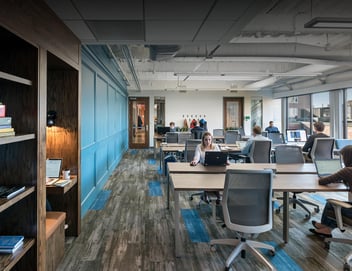The Carpool CEO, One Year Later: 3 Lessons For Leaders
.jpg)
Last year, my daughter started at a school nearly 50 miles from home, but if you’ve ever tried driving from Massachusetts’ South Shore to the North Shore, you know it might as well be 100 miles. There’s no shortcut. No bypass. Just you, the city of Boston and a whole lot of traffic. As a result, I’ve given myself a new title: Carpool CEO.
At first, it was a survival tactic, part joke, part reminder that I could juggle both the demands of my company and the logistics of a long-haul drop-off. A year later, I’ve gained so much perspective on how unsustainable our traditional expectations around work really are, whether you’re a caregiver navigating real-life logistics, or simply someone who knows they don’t do their best work just because someone else says that’s where it should happen.
Here are a few lessons to help my fellow leaders who may be in a similar situation or are managing teams with diverse needs:
Shift your mindset.
Early on, I knew I had to have a routine that was sustainable and that would actually lead to a productive day of work after drop-off. The answer wasn’t going to be a coffee shop or the front seat of my car. That’s when a coworking space became my north star, literally and figuratively.
Instead of fighting the commute from the opposite side of the city, I could settle into a professional, thoughtfully designed space just 10 minutes from my daughter’s school. My carpool day wasn’t a lost workday; it became one of my most productive. I could jump into Zoom calls, review contracts, meet with my team, feed off the energy of other professionals around me and still be just minutes away when pickup rolled around.
Show up as your whole self—and allow others to do the same.
I’ve always said people should feel free to bring their whole selves to work. But this year? I finally understood it in a whole new way. My team knew that Wednesdays were my carpool days. That meant meetings would need to be virtual, or they’d have to come out to Salem if they wanted face time. It was a vulnerable shift, letting people see the real-life juggle and the accommodations I was making as a mom. I didn’t attempt to hide it; I owned it. I blocked my calendar from 3 to 5 p.m. every Wednesday for the afternoon carpool. And while I was off the grid from the office, the carpool crew got a front-row seat to business school every time I put in my AirPods and took a call.
Surprisingly, even in 2025, far too many caregivers, mothers especially, still feel the pressure to hide the fact that they have people relying on them at home. As if being a caregiver somehow makes them less committed, less capable, or less “professional.” I took this year as an opportunity to do the opposite. I embraced it. I wrote about it. I talked about it. And I led by example, as a mother and a CEO who isn’t afraid to redesign her work life around her real life. Because showing up fully makes us better leaders.
Not everyone has a 50-mile commute and, to be clear, I wouldn’t recommend it, but everyone has their version of the juggle: A sick parent. A camp pickup at 1 p.m. A dentist that only books 11 a.m. cleanings. A dog that needs meds at noon. The best leaders earn loyalty and output by empowering employees to make work work. Where and when you work should be tied to purpose and intention, not outdated norms based on how the generation leaving the workforce happened to do it in the past.
Create workspaces with real amenities.
For too long, workspaces haven’t been designed with employees in mind. Landlords and CEOs, often cut from the same cloth, still believe that shiny amenities will bring people back to the office. In reality, we want workspaces that work for us, spaces that understand what our lives actually look like and are built to support productivity.
Leaders often struggle to find amenities that resonate across a diverse workforce, and it’s no wonder. For the first time in history, five generations are working side by side. Last year, Harvard Business Review reported that thoughtfully designed events can significantly boost engagement. This is a great place to start because it does not require a significant investment. Inclusive experiences—such as lunch and learns, silent book clubs or running clubs—can go a long way in creating connection and adding value for employees during their workday. The return-to-office debate will keep missing the mark until leaders realize that it’s not about perks, it’s about practicality, flexibility and humanity.
In the past year, I’ve become more intentional with my time, more empathetic to the realities of my team and our members and more determined to build spaces where real life is accounted for, not ignored or squeezed in around the edges. As I prepare for another school year of carpools and coworking, I don’t feel stressed; I feel grateful. Grateful that I don’t have to choose between being a present parent and a present leader. Grateful that I built a company with the kind of flexibility I now rely on myself. And grateful for a community of working parents, entrepreneurs, creatives and professionals who remind me every day that this version of work works, when we’re willing to design it around people, not policies.
This article was originally published on Forbes Business Council. Read all of Sarah's publications on Forbes here.
-1.jpg?width=352&name=125A8554%20(1)-1.jpg)

